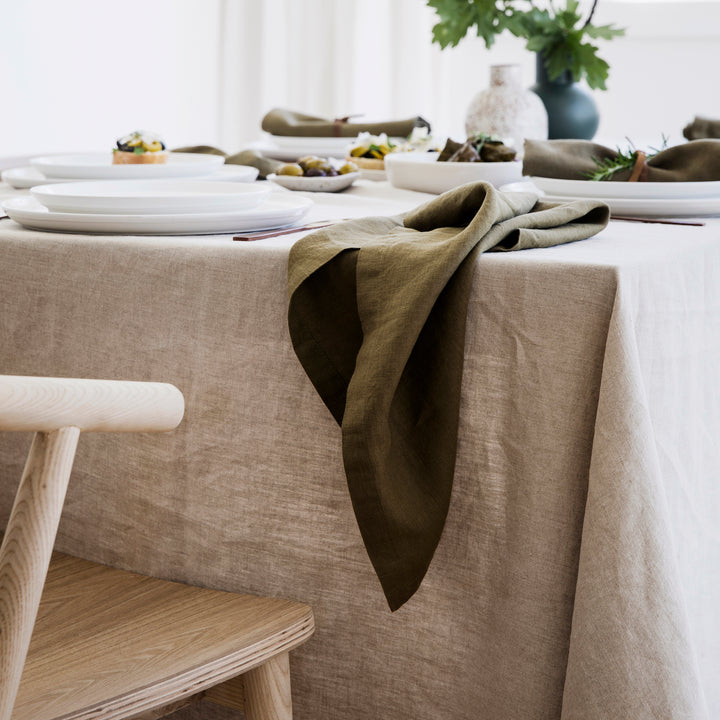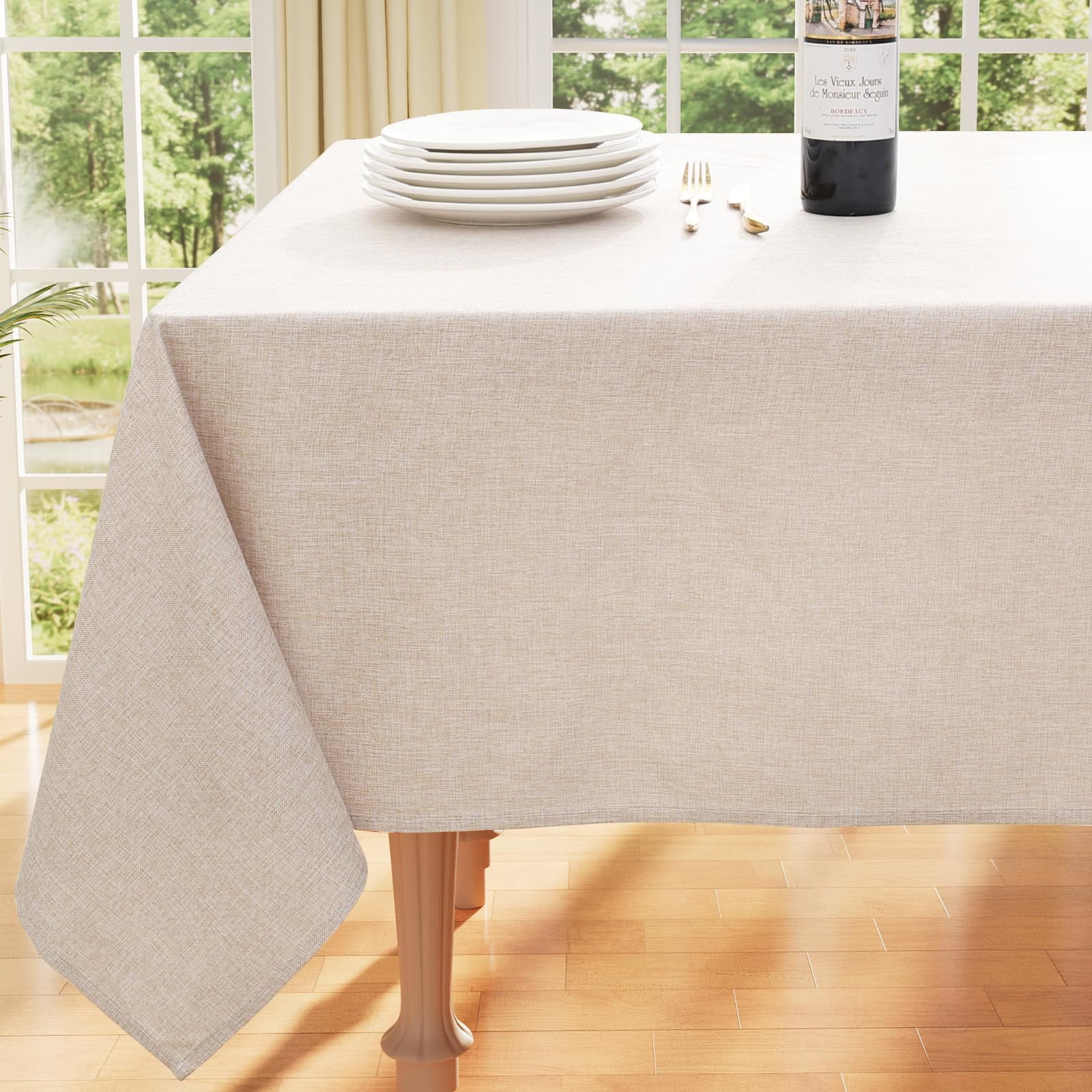Linen Material Technologies: Checking Out Modern Trends and Creative Applications in Design and Fabric Market
From sustainable manufacturing methods to advanced weaving innovations, the evolution of linen is improving the landscape of the fabric sector. As we dive right into the realms of innovative design applications and the introduction of bed linen blends and crossbreed textiles, a new phase unravels in which bed linen's function in future fabric technologies takes center stage.
Sustainable Practices in Bed Linen Manufacturing
Lasting practices in linen production have ended up being significantly essential in the fabric sector's initiatives to lessen ecological effect and promote moral sourcing techniques. Bed linen, an all-natural fiber derived from the flax plant, uses a series of advantages such as sturdiness, breathability, and biodegradability. However, standard methods of linen production can entail considerable water consumption, chemical usage, and energy-intensive processes.
To address these obstacles, lots of textile makers are taking on lasting practices throughout the linen production process. This consists of sourcing flax from organic ranches that prevent hazardous pesticides and chemicals, carrying out water-efficient retting methods to extract fibers from the flax stalks, and using eco-friendly dyes and finishes. Additionally, some companies are buying eco-friendly power sources to power their manufacturing facilities and lowering waste through recycling and upcycling initiatives.
Technical Innovations in Linen Weaving
With the growing emphasis on lasting techniques in linen production, the fabric industry is currently witnessing a surge in technical innovations specifically targeted at revolutionizing the art of bed linen weaving. These developments are improving the means linen materials are produced, providing raised efficiency, high quality, and creative thinking in weaving methods.
Among the crucial technical improvements in linen weaving is the combination of digital looms. These innovative looms are furnished with software application that permits elaborate and complicated designs to be woven with precision. By digitizing the weaving procedure, suppliers can achieve better uniformity and precision in their bed linen textiles.
Furthermore, advancements in yarn spinning modern technology have made it possible for the production of finer and even more long lasting linen threads - table cloths. This causes softer and smoother linen fabrics that retain their quality also after multiple uses and cleans
Furthermore, the development of environment-friendly dyeing processes and finishes for linen materials is getting traction. These lasting techniques not only decrease the ecological impact however also deal with the enhancing consumer demand for ethically produced textiles.
Creative Style Applications for Bed Linen
Ingenious artistic approaches are significantly forming the creative style applications for bed linen in the fabric industry. Bed linen's all-natural aesthetic appeal and ability to blend with various other materials make it a preferred option for creating one-of-a-kind garments and devices that provide to the ecologically aware customer.
Furthermore, developers are try out linen in home decoration, utilizing its long lasting and breathable nature to craft elegant furnishings such as drapes, bedding, and furniture. The structure and drape of linen bring a feeling of refinement and comfort to interior rooms, including a touch of beauty to modern homes.

Linen Blends and Crossbreed Fabrics

Hybrid textiles, on the other hand, take the idea of blending a step further by incorporating additional aspects such as metallic threads, recycled materials, or conductive fibers. These innovative fabrics not only increase the style possibilities but also present functional facets like conductivity, antimicrobial buildings, or boosted sturdiness. Hybrid textiles are significantly being made use of in different industries, consisting of fashion, interior decoration, and technical fabrics, where the demand for multifunctional materials is on the surge.
Linen's Duty in Future Fabric Innovations

In the realm of future fabric developments, bed linen is anticipated to be a principal in the advancement of advanced practical textiles. Designers and researchers are discovering methods to improve bed linen's fundamental top qualities via technological improvements, such as including wise fabrics, nanotechnology, read more and efficiency coatings. These developments aim to raise bed linen's efficiency attributes, making it read this appropriate for a more comprehensive variety of applications, from activewear to protective garments.
Furthermore, the mix of linen with other all-natural or synthetic fibers opens limitless opportunities for creating unique fabrics with unique residential properties and capabilities. By leveraging bed linen's qualities and exploring cutting-edge blends, the textile industry is poised to present interesting growths that provide to evolving consumer requirements and sustainability demands.
Conclusion
To conclude, the exploration of lasting methods, technical developments, creative layout applications, bed linen blends, and its role in future fabric technologies highlight the constant advancement of linen material in the modern-day design and fabric market. With a focus on development and creativity, the versatility and environment-friendly nature of linen make it a useful material for producers and developers alike, leading the way for additional advancements and improvements in the field of textiles.
As we dig right into the worlds of imaginative layout applications and the introduction of linen blends and hybrid textiles, a new phase unfolds in which linen's function in future textile technologies takes facility stage.
Discovering the fusion of linen with various other fabrics has led to the development of cutting-edge blends and crossbreed textiles in the modern fabric sector. Linen blends use an one-of-a-kind combination of the attributes of bed linen with those of other fibers, resulting in materials that possess boosted buildings such as increased longevity, improved draping, and reduced over here wrinkling.The evolution of linen blends and crossbreed fabrics has established the phase for Bed linen to play a pivotal role in driving future fabric advancements.In the world of future fabric developments, linen is expected to be an essential player in the growth of sophisticated functional materials.
 Luke Perry Then & Now!
Luke Perry Then & Now! Michelle Pfeiffer Then & Now!
Michelle Pfeiffer Then & Now! Kenan Thompson Then & Now!
Kenan Thompson Then & Now! Danny Pintauro Then & Now!
Danny Pintauro Then & Now! Tina Majorino Then & Now!
Tina Majorino Then & Now!